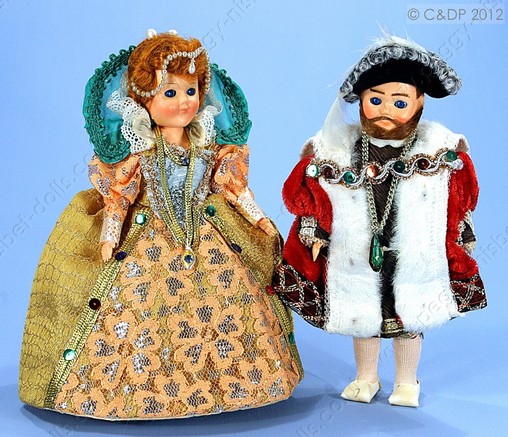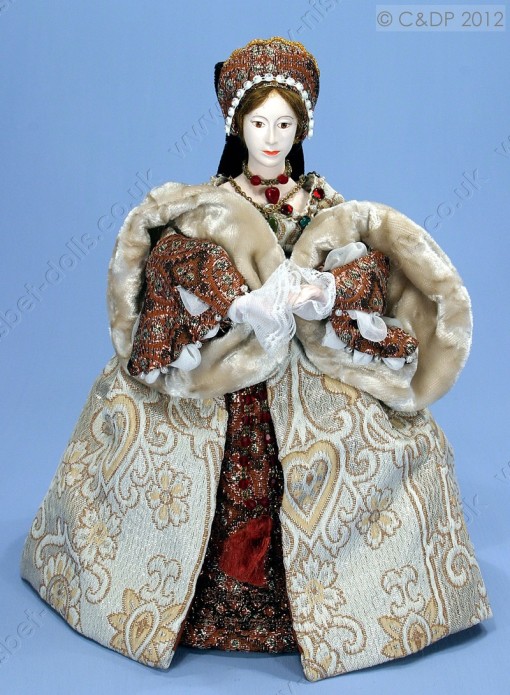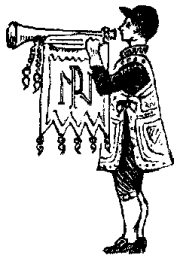The Dolls
A look at the list on the right of this pane will immediately show how vast was the range of dolls produced by the Nisbet organization. For many collectors, the sheer quantity of different characters, and number of different versions of some of the more popular dolls has understandably led to confusion.
For example, King Henry VIII and his six wives were perennial favourites amongst collectors, and sets were produced in the Historical, Portrait, and Dolls House Miniatures ranges, and spotting the difference between an "Historical" and a "Portrait" Henry VIII can be a real challenge!
Some doll designs were issued for a short period, and then withdrawn - only to reappear as a completely new character!
A Brief Introduction to Peggy Nisbet Dolls
Rosebud dolls
Early Rosebud dolls, dressed by Peggy, are very rare, and only a couple of photographs appear in her book, “The Peggy Nisbet Story”, to show us what they looked like. The two examples shown here are said to have a provenance that establishes them as being dressed by Peggy, but as there are no printed boxes or labels with them to support this claim, there remains an element of doubt. The style and detail of their costumes, and the characters they are dressed as, (Elizabeth I and Henry VIII), are all in accord with what we know of these earliest Nisbet dolls, and so we have a high level of confidence that they may be genuine, Peggy Nisbet dressed, Rosebud dolls.
By the time Peggy Nisbet began making her dolls in the early 1950’s, “Rosebud” dolls were becoming very popular. They were hollow moulded hard plastic dolls, with “sleepy” eyes that closed when they were laid down. They were relatively inexpensive, and at 8 inches tall, a convenient size to work with. Also, they could be purchased nude, so that owners could dress them as they pleased.
Tower Walk dolls
As the Nisbet business grew, Peggy wanted to make her own plastic dolls, as she felt that the Rosebuds were too childlike. She wanted a doll with a more elegant and adult body shape to dress, and so decided to make her own. Many of the early attempts were unsuccessful – in the years after the war, the chemistry involved in making a suitable and stable plastic was not as technologically advanced as it is now. Peggy decided on a cold setting resin mix for her dolls, but there were problems with the recipe. Many of these dolls were ruined when acidic chemicals used to cure the mix began to slowly leach out of the resin, causing damage to the clothes of the dolls. Even some of the examples with a more stable resin mix suffered with this problem to a limited extent, and this caused the faces and hands, which were originally painted a flesh colour, to gradually assume a grey or greyish-blue pallor. This is evident to varying degrees on some of the Tower Walk dolls shown on this website.
The stylised facial appearance of this stunning doll, (Peggy called it “moon-faced”), is very evocative of the mid 1950’s, and yet she retains a timeless and elegant appeal for collectors everywhere, as this beautiful model shows
Historical series dolls
Following the problems with the Tower Walk resin dolls, Peggy finally settled on the hard plastic (Styrene) bodied dolls that most collectors are familiar with. It is these dolls that form the bulk of her output, and although the individual faces may be different, the dolls are all made from the same plastic. The “Historical” series of dolls are all dressed in costumes representative of certain individuals or eras. The majority of the dolls in the Historical series all have the same face, (referred to by some Nisbet collectors as the “Dolly” face), but by skilful painting, and the use of different coloured wigs, they all assume an individual identity.
Portrait series dolls
Portrait series dolls were made to represent various historical personalities, both in facial likeness, as well as in dress, and were often modelled on famous portraits. They were usually finished to a slightly higher standard than the Historical range, often using more material, and better trimmings than the Historical dolls. Peggy Nisbet took great pride in the accuracy of their costumes, making great efforts to ensure authenticity in every detail – even in places where it didn’t show, such as the undergarments!
Limited Edition dolls
Limited Edition dolls were, as their name implies, made in smaller numbers than the dolls in the Historical and Portrait ranges. Limited Editions were, (with a few early exceptions), all based on the “Portrait” bodies, and were made to represent the chosen character at a particular time, or historic event in their life, such as the “Spanish Armada” set, which included Elizabeth I, Sir Francis Drake, and Philip of Spain amongst its members. As was always the case, the dolls were beautifully dressed, in costumes relevant to the event portrayed. Their limited numbers ensure that they will always be scarce, and much sought after by collectors.
Doll House Miniatures
Doll House Miniatures were the smallest dolls Nisbet ever made, (at 6” high), and were fully jointed, allowing them to be posed. They also included, (amongst other sets), Henry VIII and his six wives. Because of their complex construction, (with joints at shoulders, elbows, hips and knees), and the difficulty of producing the intricate costumes on a smaller scale, they were relatively expensive, and were never produced in great volumes. Amongst doll house enthusiasts, these tiny dolls are still much sought after today, and can attract surprisingly high prices at auction.
Tower Treasures dolls
Tower Treasures dolls were introduced in May 1976, with Queen Elizabeth I being the inaugural model, priced at £30.00, including VAT (only 8% in those days!). Their high price meant that only the most dedicated and affluent of collectors could afford them. The dolls were, without any doubt, the finest creations ever produced by Peggy Nisbet. They had bisque porcelain heads, hands, and feet, sewn onto a stuffed kid leather body, and the costumes were made from the finest materials and trimmings. The range included, (apart from Elizabeth I), Mary, Queen of Scots, and Lady Jane Grey, (and also more recent members of the Royal family, including the Queen Mother, and our own Queen Elizabeth II).










